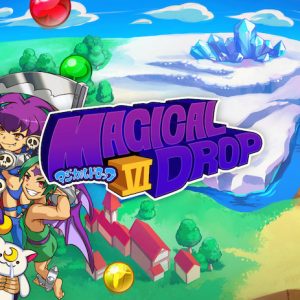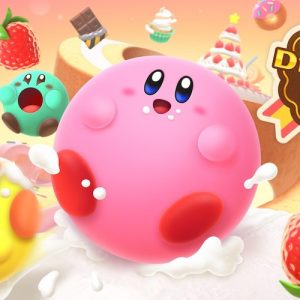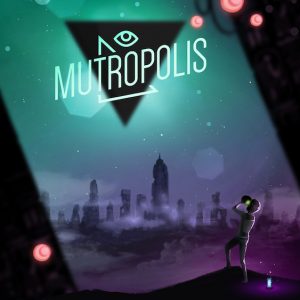Based on its name and genre, you’d be forgiven for expecting Pokkén Tournament to be little more than a clone of the latest Tekken game featuring Pikachu instead of Kazuya Mishima. Thankfully — and somewhat surprisingly, I must admit — Pokkén feels like a brand-new game in its own right.
The most immediate and striking difference is its three-dimensional gameplay. Whereas Tekken has always been a side-scrolling fighter, Pokkén’s battles take place in arenas which vary slightly in size and shape — from large circles, to smaller ovals. Although it must be said, the backdrop and visuals serve to provide more interest than slight changes to the arena between battles.
Each stage appears painstakingly detailed and animated, with the bustling streets of Neos City and the molten depths of Phos Volcano beautifully demonstrating Pokkén Tournament’s simplistic yet striking art style. Its character models are equally well-made, with each of the roster’s Pokémon surviving the rare transition into high-definition remarkably. Some have clearly been modified to accommodate the brawling gameplay, but there’s no denying that Bandai Namco has done a great job with the IP, despite a few questionable choices in the roster.
Chandelure has to be the strangest decision, while already-huge Charizard has been buffed up with a six pack — and the less said about Blaziken’s genitals, the better. Out of the 766 Pokémon currently known to mankind, sixteen sure sounds like a stingy number to include in the game, but each one feels unique and handles different to the last.
The gameplay itself feels like a much more accessible version of Tekken, although you wouldn’t think it based on the tutorials. A talkative character named Nia talks you through each of the game’s mechanics, describing the battle system as “a fancy game of rock-paper-scissors.” Pokkén knows its audience isn’t the hardcore fighting game masses, and has gone above and beyond to explain everything in the simplest of terms. If you are above the age of twelve, you can probably ignore the tutorials altogether.
Although the gameplay may initially seem confusing, with a relatively high barrier for entry, Pokkén lacks the depth of contemporary fighting games. There’s little in the way of making a half-circle with the left stick while mashing three face buttons and a shoulder button in a lightning fast sequence to execute a combo; Pokkén instead opts to focus on a more action-oriented style. Ranged attacks can be blocked by shields, shields are broken by grab moves, and grab moves can be countered by a close-range attack. It’s clearly catered towards younger gamers, and it works well to the extent that it needs to.
Its depth is instead replaced by Synergy and Support Gauges, which fill up as you land attacks. These lend you the benefits of a previously selected support Pokémon, in the form of status buffs or a one-off attack, and allow you to temporarily unleash your Pokémon’s Mega Evolution. This takes the action out of your hands and into a predetermined set piece, but it serves its purpose to make the game much more accessible while removing the often overwhelming need to learn crazy combos to fare well.
The core single-player gameplay takes place in what’s called the Ferrum League. It’s five self-contained tournaments, with each one consisting of a number of ranked battles. Once you’ve defeated enough Pokémon Trainers and are ranked within the top six of that particular tournament, you’ll have the option to face the current champion and, upon success, take part in a “promotion” battle, which grants you access to the next league should you win.
It’s a lot of the same thing over and over again, but it’s nothing less than you’d expect from a fighting game’s story. Bandai has attempted to keep it interesting and accessible, with an RPG-style ranking system which sees your selected Pokémon gain experience points after each battle. Earning XP levels up your Pokémon, and with each level comes an upgrade point, which you can choose to apply to that particular Pokémon’s Attack, Defence, Synergy or Strategy statistic. Sadly, this discourages players from switching between Pokémon after each battle, and pretty much forces you to stick with the same character for the duration of the whole game. In the Menu, there’s the option to reassign your points between statistics, but no option to transfer them between Pokémon.
After winning the first two leagues, ranking my trusty Suicune up to level 25 after a solid forty something battles, I decided to jump into the online multiplayer. The options are minimal, and creating a private room to play with a friend is typically convoluted (but at least it’s there, Camelot). It took mere seconds to find a challenger from across the globe, and despite being somewhat uneven in terms of level, we were duking it out within seconds.
Rather questionably, however, the levels and XP earned in the Ferrum League is carried over to online play, and vice versa. I’m sure it was a good idea in theory; if players gets stuck in single-player, they can jump online to grind a Pokémon’s levels. However, in reality, it restricts those who always want to have an edge over their competitors by sticking with one Pokémon throughout, and offers very little motivation to try out the selection of available characters by exploring each one’s moveset — which is arguably one of the most compelling aspects of other fighting games.
As you may have heard, Pokkén Tournament’s first print run came bundled with a limited edition amiibo card. This temporarily unlocks Shadow Mewtwo as a playable character, but the NFC card must be scanned each and every time you load up the game. This character is unlocked on a permanent basis by completing the Ferrum League, so there’s no content locked away if you didn’t manage to get an early copy of the game. All of your existing amiibo are compatible, too, but you’re limited to scanning up to five per day. These unlock various throwaway items, including outfits for your on-screen avatar, and titles which you can show off next to your name when you take the fight online.
Pokkén Tournament (Wii U) Verdict
Pokkén Tournament isn’t a hardcore fighting game, and much less does it pretend to be one. It sacrifices its sister series’ depth to pursue a younger target audience, and it achieves that goal with finesse. If you’re expecting anything more than an introduction to the fighting game genre for younger Pokémon fans then you’ll be disappointed. But if you’re after some family-friendly fun with your children or siblings, Pokkén Tournament should be right up your alley.
6/10
Originally published on NintendoNews.com






